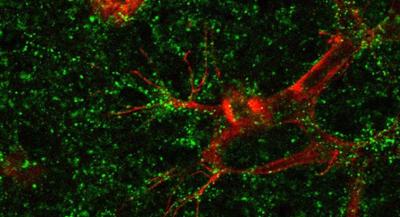
In a new study, scientists test a possible new therapy for eye diseases that's based on fragments of the CITED2 protein. Here, the protein interacts with tips of blood vessels in the retina. Image credit: Ayumi Usui-Ouchi, Friedlander laboratory at Scripps Research.
Scientists at Scripps Research have uncovered a potential new strategy for treating eye diseases that affect millions of people around the world, often resulting in blindness.
Many serious eye diseases—including age-related macular degeneration, diabetic retinopathy and related disorders of the retina—feature abnormal overgrowth of new retinal blood vessel branches, which can lead to progressive loss of vision. It’s a phenomenon called “neovascularization.”
For the past decade and a half, eye doctors have been treating these conditions with drugs that block a protein, VEGF, that’s responsible for spurring new vessel growth. Such drugs have improved the treatment of these conditions, but don’t always work well and have potential safety issues. The Scripps Research scientists, in a study published in the Proceedings of the National Academy of Sciences, showed that a new approach that doesn’t target VEGF directly is highly effective in mice and has broader benefits than a standard VEGF-blocking treatment.